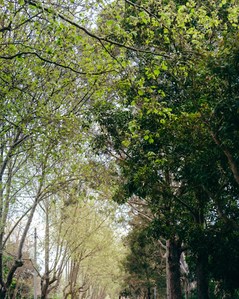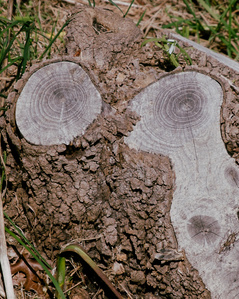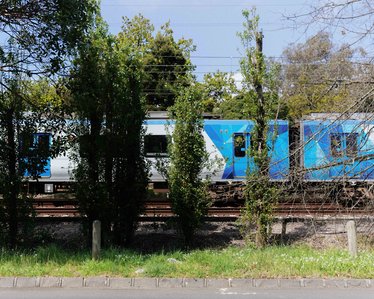
William Head was killed on the first morning of the Gallipoli landings on the 25th April 1915, the day on which would formally become the first ANZAC Day.
On the 50th anniversary of William's death in 1965, Mont Albert residents planted 9 trees in honour of William and 8 other servicemen, 3 of which for his brothers, Fawcett, Rowland and Gordon.
To this day the trees still stand tall as living memorials on Churchill Street, however they may soon be forgotten, perhaps lost forever.
It's estimated that around 550 trees along the Mont Albert and Surrey Hills train line (including the 9 planted on Churchill Street) are in the firing line to be cut down, it has been confirmed that the works will begin on the 25th October, 2021.
With a small window of time remaining to have the communities voice heard, this series acts as a final effort to express the sentiment and history attached to these trees and the importance in fighting for their survival.
If you want to help to save the Avenue of Honour and other heritage listed trees in the area, please sign the petition here.

John, holding the Head's family photo, standing in-between the train line and memorial trees.
“Will’s death affected the family very deeply, it was 6 months before they could find out his fate." - John Trevorrow.
John Trevorrow is a descendant of the Head family, William Head was John's Great Uncle. “Our family has always been interested in our own family history. The original Head’s arrived in Melbourne in 1839, so the city was only 4 years old.
In late 1913-early 1914 the Head family moved to Leopold Crescent in Mont Albert. In August 1914 war was declared by the government. The first day of induction for recruitment opened in the second week of August, Will rushed to sign up. John tells me "A lot of people rushed off to sign up because it was a bit of an adventure, but they didn’t know what they were getting themselves into."
Will was sent to the Middle East for extra training before arriving ashore in Gallipoli with the 7th Battalion, this would be the final moments for Will and 90 other soldiers as they were shot dead on the beach.
Telegrams were used at the time as means of communication between families and those on the front line, resulting in long delays in information being distributed. It would be another 6 months and several telegrams before the Head family would have closure on their son's fate, killed in action on the opening day of the campaign.
The news of Will's passing didn't seem to deter his brothers from enlisting. Fawcett Head signed up in February 1916, Rowland in October, and Gordon in June 1917 once he had turned 18. All 3 of the brothers survived the remainder of the war and returned to Melbourne.
When asked about the importance of the trees John said, “It’s interesting there's a lot of memorials you know, big and small. Things like the Shrine of Remembrance on St Kilda Road and the Shrine in Surrey Hills. There’s a lot of those memorials but this one is a fairly personal one, with a plaque there saying it’s in memory of the 4 Head brothers and 5 of their mates. So from that point of view it’s meaningful to know that people thought enough about the sacrifice and the service of these young men and the other young men to commemorate them. It’s very meaningful."




Formally known as Memorial Plaques, the Dead Man's Penny was assigned to the family of every solider who was killed in the Great War. They were sent out by the British government, which included a letter from Buckingham Palace, signed by King George V.
Every penny was made individually with its own custom casting of each soldiers name. There were approximately 60,000 Australian’s killed in the First World War. Each letter penned by King George V stated, “I join with my grateful people in sending you this memorial of a brave life given for others in the Great War."
Despite King George V’s personal sentiments regarding the sacrifices of those men, Mont Albert's Avenue of Honour memorial trees are soon to be worth even less than that of a penny and reduced to nothing but bark chips.

“It was nicknamed the Dead Man's Penny, which I guess is a bit ironical but also critical I suppose...his life was worth a penny.”

A list of fallen soldiers including William Head at the Surrey Hills Shrine.


The Strength of Australia.

Ian's home on Beatty Street has been in the family for 101 years. His grandfather was an avid gardener and vegetable man, planting a lot of oak and pine trees in the garden. One of those trees is still standing to this day on some of land previously owned by the family, before it was sold in the early 1960’s. The pine tree pictured was planted in 1921 by his father. “I can’t see any necessity to cut the tree down…of course we would be disappointed but we’ve got no control over it. It’s a bit of heritage of the area disappearing.”


The next generation: Ian and his grandson Felix standing under the tree his father planted in 1921.


Ian, holding a photo of his father.

The entire right side of trees in this image are under attack to cut down.
As of writing this today 550 trees have been earmarked for removal with another 100 trees under investigation along the 1.3km stretch of the railway line. Whilst residents understand that some trees will need to make way for the level crossing upgrades, many are confused as to some of the reasoning for specific trees that seem to be out of the way of the actual line.
This problem isn't unique to the Mont Albert and Surrey Hills area, many other suburbs have had the same fight on their hands to keep their heritage trees from being struck down by the LXRP.
An article in The Age by Clay Lucas details the numerous sites across Melbourne, where people have fought with little success in retaining the trees of their neighbourhood. Of the 100 trees James Conlan led to save at Moreland Station in 2019, only 4 remain.
David Berry, president of the Blackburn and District Tree Preservation Society had even less luck. He told Clay Lucas he attempted to stop 500 mature trees from being cut down in Blackburn, 2016. His push fell short with no action being taken and to add insult to injury even more trees were removed than what residents had been notified about.
Melbourne was previously known as the Garden State, but now boasts its badge of being the World’s Most Liveable City, how times have changed.


Simon Seear, a local resident of Mont Albert, has been a vocal advocate for saving the 9 memorial trees. He also organised to have the memorial plaque Replaced on the tree after it had gone missing.

David Davis MP told 7 News "It's actually such a shocking insult that you would so disrespectfully and unthoughtfully knock these trees down."

A bleak look into the future. What was once a flourishing area of native flora and fauna is now nothing but cement in Cheltenham.
When asked about the intended reason for needing to cut down the 9 trees, Steve Brown from the Level Crossing Removal Project (LXRP) said that it's, “to provide for a critical access point to the rail way and that is required to safely maintain and operate the railway line.”
While this statement may be true for the reasoning of removing the trees, the chosen location for this critical access point leaves residents scratching their heads, with many offering a handful of other logical locations along the train line to combat the problem. Simon, along with other Churchill Street locals have even offered to pay for and dig around the trees themselves to offset any hassle the trees may create. These offers were not met with a solution from the LXRP who are reluctant to meet in the middle or offer clarity to those with questions.




Cut here.



The identity of the Eastern suburbs is currently in the middle of a radical makeover, moving at a pace never before seen. Wrecking balls are attached to ‘for sale’ signs, cranes fill the horizons. The meaning of heritage is being diluted as urbanisation redefines what the area once was. The culture, heart and soul of the everyday individual is now being replaced by the clean and polished, safe and boring, by the mindless. The lack of care that has been demonstrated by the LXRP and local council for these memorial trees and residents falls directly in line with their intended care for the future of Melbourne, which is very little. History has been disregarded, the old left behind.
The sun sets quicker in the East these days, as the shadows of the past grow larger. The towers rise taller, the concrete jungle roars louder. The Golden Age of the grey and dull minds of soulless infrastructure. Heritage and its hardship are no longer. Lost locations for locals compromise the community. Chains shackled to what was once home grown. Profit over people. The busy city life is knocking at the door. Waiting to be let in. And so it goes…


Lorne Parade Reserve has been a public open space since at least 1910. For local residents it is the largest open space they have. It also appears on the list of the 15 suburbs that have the least amount of tree cover and open space. This isn't something locals can afford to lose with the little they have.

A sign placed on the railway line at Surrey Hills, the lack of discourse from both council and government has left residents frustrated.

The boom gate between Mont Albert and Surrey Hills station, boom gates will be a token of the past in the coming years.


Wildlife
The planned works by the LXRP will have a devastating impact on the local wildlife that inhabits the trees. There have been promises of replanting trees in certain areas after the works are completed but local residents aren't too hopeful. It will still take decades before they are close to the size of the trees that previously lived before them.




Raise your VOICE if you care about the environment.
Sign the petition to save the trees.
John, Ian, Felix, Simon, George, Pat and the other residents who have done all they can to cause action and bring awareness to this issue.
If you want to further voice your concerns you can email local MP Paul Hamer.
paul.hamer@parliament.vic.gov.au
Or phone 9898 6606.